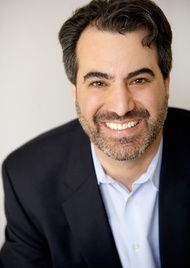By: Ron Pernick

Of the recent political maneuvering and verbal attacks in the current presidential election, perhaps one of the most disappointing and frustrating has been John McCain's disparagement of conservation and efficiency. Mocking Obama's call for Americans to make sure their tires are properly inflated to help reduce gasoline consumption: The McCain team started handing out tire gauges to journalists and editors engraved with the words - "Obama's Energy Plan." Give me a break! It's time that serious and informed policymakers stop putting down one of the most effective energy sources of all: conservation and efficiency (or what some people call the "fifth fuel.") There's nothing funny about disparaging one of our most valuable energy assets. It's common knowledge among energy experts that the lowest hanging fruit is often conservation and efficiency. And I believe that most traditional "conservatives" in the mold of Theodore Roosevelt and British statesman Edmund Burke (often credited with founding modern conservatism) understand the value of energy "conservation." Conservation and efficiency also make good economic sense. In some research my colleagues and I recently conducted at Clean Edge, we analyzed the capital costs to deploy a range of energy generation and energy reduction measures for utilities. In most cases, energy conservation efforts (everything from implementing energy efficiency programs to demand side management) came in as the least expensive option. On the automobile front, the Department of Energy estimates that "you can improve your gas mileage by around 3.3 percent by keeping your tires inflated to the proper pressure." Combined with regular tune-ups, replacing clogged air filters, and using the right oil grade, the U.S. Department of Energy estimates that the average driver could save 18-19 percent combined. So how much savings are we talking about? According to the U.S. Government Accountability Office, about 1.2 billion gallons of fuel per year could be saved from properly inflated tires alone (equal to about one percent of total gasoline consumption). And many of these conservation measures can be done in very short order. By contrast, opening up drilling in areas that are currently off-limits in the Gulf of Mexico and off the Atlantic and Pacific Coasts of the lower 48 states are estimated to be just slightly more than the savings that could be achieved via proper tire pressure. The Energy Information Administration projects that there's about 1.5 billion gallons of gasoline a year that could be accessed from new offshore drilling, but that it wouldn't come online for years. To be fair, some industry estimates show that this number could be much higher, but no clear metrics exist. Amory Lovins and Hunter Lovins, in their 1998 Club of Rome report Factor Four: Doubling Wealth, Halving Resource Use, outlined how to double the world's wealth while halving resource use. They wrote in the book's introduction: "'Factor Four,' in a nutshell, means that resource productivity can - and should - grow fourfold. The amount of wealth extracted from one unit of natural resources can quadruple. ...it heralds nothing less than a new direction for technological 'progress.'" These remain awfully sage words in today's carbon- and resource- constrained world. But in his attempt to score political points by painting Obama in some cardigan-wearing, Carteresque light - McCain did a disservice to the broader energy dialogue. It harkens back to Vice President Cheney's discounting of energy efficiency more than seven years ago, when he stated "Conservation may be a sign of personal virtue, but it is not a sufficient basis for a sound, comprehensive energy policy." The future of energy in the U.S. will involve a combination of many different technologies, policies, and business approaches. There is no one silver bullet. In my estimation, we're talking about the massive scale up of solar, wind and other non-hydro clean-energy sources (getting to 30 percent of the nation's electricity generation by around 2030); the extensive build-out of green buildings and energy-sipping built environments; the deployment of a smart grid and plug-in hybrid and all-electric vehicles; and yes, energy efficiency measures as simple as tuning one's car and weatherizing one's house for the winter. The issues we face will require an integrated, whole-systems approach that utilizes the best weapons in our clean-energy arsenal. In fact, a review of both Obama's and McCain's web sites, point to a range of options and policy recommendations by both candidates. Implying otherwise is simply ludicrous. And, I believe, near the center of any 21st Century energy plan should sit a robust energy efficiency and conservation component - one that is exemplified rather than belittled. ------ Ron Pernick is co-founder and managing director of Clean Edge, Inc., coauthor of The Clean Tech Revolution, and Sustainability Fellow at Portland State University's School of Business.

